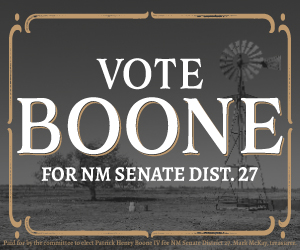Valuable watershed and infrastructure to be protected from wildfire
Santa Fe, NM – The second phase of ahazardous fuels reduction project to protect communities and prevent catastrophic wildfire in New Mexico’s Sacramento Mountains begins this fall. The Joplin Ridge Phase II project will reduce the fire risk to surrounding communities, forests, and watersheds in Otero County. It will also protect essential infrastructure, including the Sunspot Solar Observatory, Apache Point Observatory, Oliver Lee State Park, and area powerlines.
The Energy, Minerals and Natural Resources Department’s (EMNRD) Forestry Division is working in partnership with the State Land Office (SLO), the U.S. Department of Agriculture Forest Service (USFS) – Lincoln National Forest, and Otero County Electric Cooperative to complete the thinning project by June 2022.
Thinning is an effective method of restoring a forest ecosystem. It decreases the likelihood of detrimental impacts from climate change, insect infestation, and uncharacteristic wildfire. Simultaneously, it provides the remaining trees with better access to resources, such as water and sunlight, allowing a healthy ecosystem to thrive.
The Joplin Ridge Phase II project encompasses 144 acres of State Trust Land on the west side of the Sacramento Mountains and complements the 75-acre Joplin Ridge Phase I project completed in May. The project will consist of thinning fuel breaks adjacent to Forest Road 90B and between the Otero County Electric Cooperative powerline along Forest Road 90 (Westside Road). Forest Service trails in the area will remain open. The project is located within a 2,600-acre state-owned parcel that also includes a highly vulnerable watershed that provides water to the City of Alamogordo.
The Otero County Electric Cooperative flew the area along and adjacent to the powerline with a drone to capture video of the tree density before the project started. The Electric Cooperative will revisit the powerline and adjacent area after thinning to document the fuels reduction and provide the public with a before-and-after comparison.
“New Mexico doesn’t need more wildfires started by trees falling on powerlines,” said Laura McCarthy, State Forester. “This pilot project provides the Forestry Division with an opportunity to learn about the powerline across Joplin Ridge and then replicate the lessons learned in other places.”
The Joplin Ridge Phase II project is funded by the New Mexico Forest and Watershed Restoration Act (FAWRA) and with Capital funds and administered through the EMNRD Forestry Division. For more information, contact Mary Lavin, Capitan District Timber Management Officer, at mary.lavin@state.nm.us.





























